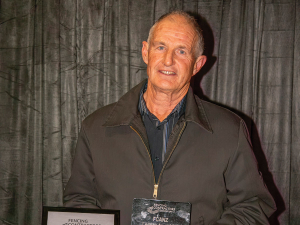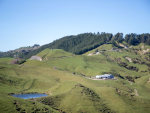And a survey by Beef + Lamb New Zealand shows a big drop in ewe and hogget numbers.
The survey of 500 sheep and beef farms nationwide shows that while nationally breeding ewe numbers at 20.21 million are down by 1% on the previous year, in the North Island the drop is 2.7%. The biggest decline was in Northland, Waikato and Bay of Plenty. In the South Island, ewe numbers remained almost static. Hogget numbers are also down by 1.3%, the biggest decrease being on the North Island east coast.
The downward trend also continues for the beef sector: beef cattle numbers are estimated at 3.69 million – down by 1.3% on last year and nearly 4% down on the 2011 figures. Again the biggest fall is in the North Island, the South Island having only a modest decline.
B + L NZ’s executive director, economic service, Rob Davison, says the drought in the North Island posed particular problems because virtually every region was affected and there was nowhere for the stock to go. This resulted in a higher-than-normal slaughter of adult sheep. However, Davison does expect a recovery in the present favourable conditions.
“Because of the drought the numbers have dropped but we expect them to come back up to pre-drought numbers. In the South Island, where most of the dairy growth is at the moment, the question is how much that expansion is going to continue.
“It’s a bit early to say that at the moment, but we know there will be more conversions there, though this will depend on the granting of resource consents. But we know there is a bit of a bow wave of consents that haven’t been taken up yet so it’ll be interesting to see whether that materialises.”
The drought affected ewe condition and scanning results around the country were variable. But while there may be fewer twins born, Davison believes this will to some degree be offset by heavier single lambs.
What remains unclear is what will happen in the coming months. Clearly some ewe lambs will be retained as replacements and what happens at the saleyards may hinge on climatic conditions. Then there’s the rise and rise of dairying, rolling out on the best sheep finishing country, says Davison – meaning the sheep flock is moving up onto more hill-type country.
B + L NZ is also predicting a lower mutton kill this season. The drought saw all but the best animals retained on farms and Davison expects this season’s mutton kill to be down by about 200,000.
For the same reason, the beef kill – especially the cow kill – will be down this season. Dairy farmers tended to get rid of their culls early because of the drought and tended to cull hard. Davison predicts the cow cull to be down by 3%, steers the same and bull beef holding steady on last season.









